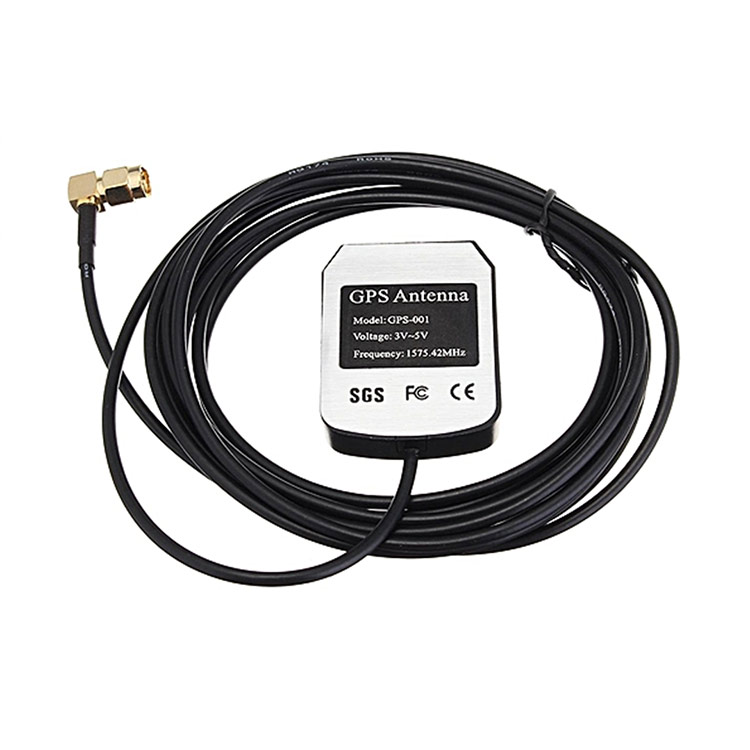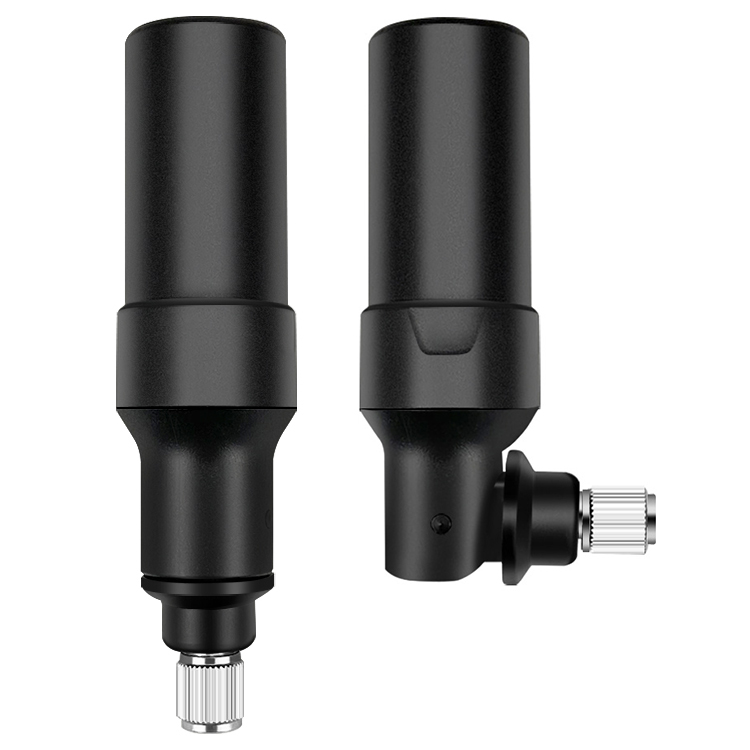The Significance of L1 and L2 Bands in GPS Performance
The GPS L1 L2 Antenna is uniquely positioned to leverage the complementary strengths of the L1 and L2 frequency bands, a capability that distinguishes it from single-band antennas. The L1 band (1575.42 MHz) is the primary civilian frequency, widely used in consumer devices and standard navigation systems. It is accessible to all GPS receivers and provides reliable positioning under open-sky conditions. The L2 band (1227.60 MHz), traditionally reserved for military use, has been opened to civilian applications, offering enhanced performance through its ability to mitigate ionospheric delays—one of the largest sources of error in GPS positioning.
By combining L1 and L2 signals, the antenna enables dual-frequency positioning, which allows receivers to calculate and correct for ionospheric interference. The ionosphere, a layer of charged particles in the Earth’s atmosphere, bends and slows GPS signals, introducing errors that can vary with time and location. Since L1 and L2 signals are affected differently by the ionosphere, comparing their travel times allows receivers to model and remove these errors, significantly improving accuracy. This dual-band capability is particularly valuable in applications requiring sub-meter or centimeter-level precision, such as land surveying, precision agriculture, and geodetic mapping, where even small errors can have significant consequences.
Technical Specifications: Precision Engineering for Reliability
The GPS L1 L2 Antenna’s technical parameters are meticulously optimized to maximize signal capture, minimize noise, and ensure compatibility with multi-constellation GNSS systems:
Frequency Range and GNSS Compatibility: Operating across 1154–1300 MHz (encompassing L2 bands for GPS and GLONASS) and 1525–1621 MHz (covering L1 bands for all major GNSS), the antenna supports a wide range of satellite signals. This includes GPS L1/L2, GLONASS L1/L2, BDS B1/B2/B3, and GALILEO E1/E2/E5a/E5b. This broad compatibility ensures that the antenna can access signals from dozens of satellites, reducing reliance on any single constellation and enhancing reliability in regions where certain satellite systems may be weak or obstructed.
LNA Gain and Signal Amplification: Equipped with a low-noise amplifier (LNA) featuring a gain of 32 ± 3 dB (typical at 25°C), the antenna efficiently amplifies weak satellite signals while minimizing noise introduction. The LNA is critical for capturing signals that have traveled over 20,000 kilometers from satellites to Earth, as their strength diminishes significantly by the time they reach the antenna. A high gain ensures that even faint signals are amplified sufficiently for processing, while the low noise figure (implied by the LNA’s design) preserves signal integrity—essential for maintaining the precision of dual-frequency measurements.
Peak Gain and Radiation Pattern: With a peak gain of ≥1.5 dBi and a 360° omnidirectional radiation pattern, the antenna balances signal strength with broad coverage. The omnidirectional design allows it to capture signals from satellites across the entire sky, making it suitable for mobile applications where the antenna’s orientation changes, such as in vehicles, drones, or surveying rovers. The peak gain, while modest compared to high-gain directional antennas, is optimized for dual-band operation, ensuring consistent performance across both L1 and L2 frequencies.
VSWR (Voltage Standing Wave Ratio): The antenna maintains a VSWR of ≤1.5 (typical), ≤1.8:1 (typical), and 2.0:1 (maximum), indicating exceptional efficiency in signal transfer between the antenna and the receiver. A low VSWR ensures that minimal signal is reflected, maximizing the amount of captured signal that reaches the receiver. This efficiency is particularly important for dual-band antennas, where maintaining performance across two frequency ranges can be challenging.
Axial Ratio of ≤1.5 dB: This parameter measures the antenna’s ability to maintain right-hand circular polarization (RHCP), which matches the polarization of GNSS satellite signals. A low axial ratio ensures that the antenna efficiently captures signals from satellites at all elevations, minimizing loss due to polarization mismatch. This is especially valuable in dynamic environments, such as moving vehicles, where the antenna’s orientation relative to the satellites changes rapidly.
Phase-Center Accuracy and Repeatability: The antenna’s phase-center accuracy (≤2.0 mm) and phase-center repeatability (≤1.0 mm) are critical for high-precision applications. The phase center is the point from which the antenna effectively radiates or receives signals; inconsistencies in this point can introduce errors in positioning calculations. The antenna’s tight phase-center specifications ensure that measurements are consistent over time and across different orientations, a key requirement for surveying, geodesy, and other applications demanding sub-centimeter accuracy.
Impedance of 50 Ohms: This industry-standard impedance ensures seamless integration with GNSS receivers, coaxial cables, and other system components, maximizing power transfer and reducing signal reflections.
Design and Construction: Durability for Field Operations
The GPS L1 L2 Antenna’s design prioritizes durability, ease of integration, and reliable performance in harsh environments:
Material and Housing: Constructed from ABS (Acrylonitrile Butadiene Styrene), the antenna’s housing is lightweight, impact-resistant, and resistant to UV radiation, moisture, and temperature extremes. This makes it suitable for outdoor use in diverse climates, from scorching deserts to freezing polar regions, ensuring long-term reliability in field operations.
Connector Type: Equipped with an SMA connector, the antenna provides a secure, low-loss connection to receivers and coaxial cables. SMA connectors are widely used in RF applications for their robust threaded design, which prevents accidental disconnection in high-vibration environments—common in construction, agriculture, or transportation. This ensures continuous signal flow, critical for maintaining positioning accuracy.
Form Factor and Mounting: The antenna’s compact design allows for flexible mounting on surveying poles, vehicle roofs, drones, or fixed structures. Its low profile minimizes wind resistance and reduces the risk of damage, while its lightweight construction ensures it does not interfere with the operation of mobile equipment. This versatility makes it suitable for both stationary and roving applications.
Operational Advantages: Beyond Single-Band Antennas
The GPS L1 L2 Antenna offers several key advantages over single-band antennas, particularly in high-precision applications:
Ionospheric Error Correction: By processing both L1 and L2 signals, the antenna enables receivers to model and remove ionospheric delays, significantly improving positioning accuracy. This is especially valuable in equatorial regions or during periods of high solar activity, where ionospheric interference is most pronounced.
Enhanced Reliability in Challenging Environments: The antenna’s broad frequency range and multi-constellation support ensure that it can maintain signal lock even when some satellites are obstructed by buildings, foliage, or terrain. For example, in urban canyons where L1 signals may be blocked, the antenna can leverage L2 signals or signals from other GNSS constellations to maintain positioning.
Consistent High-Precision Measurements: The antenna’s tight phase-center specifications and low axial ratio ensure that measurements are consistent and accurate, even as the antenna’s orientation changes. This is critical for applications like surveying, where repeated measurements must be comparable over time.
Compatibility with Advanced RTK Systems: The dual-band capability makes the antenna ideal for use with Real-Time Kinematic (RTK) systems, which rely on carrier-phase measurements from both L1 and L2 bands to achieve centimeter-level accuracy. By providing clean, amplified signals from both bands, the antenna enables RTK receivers to compute precise positions in real time.
Applications: Transforming Industries with Dual-Band Precision
The GPS L1 L2 Antenna’s versatility and precision make it indispensable across a range of industries:
Land Surveying and Geodesy: Surveyors use the antenna to collect data for boundary mapping, topographic surveys, and geodetic measurements. Its dual-band capability and tight phase-center specifications ensure sub-centimeter accuracy, reducing the need for repeated measurements and improving efficiency.
Precision Agriculture: Mounted on tractors, harvesters, or drones, the antenna enables RTK-guided farming techniques, such as variable-rate seeding, fertilization, and harvesting. By providing accurate positioning even in challenging rural environments, it helps farmers optimize resource use, increase yields, and reduce environmental impact.
Construction and Infrastructure: In construction, the antenna guides heavy machinery such as excavators, graders, and pavers, ensuring that work is performed to exact specifications. Its ability to maintain accuracy in urban areas or near large structures makes it invaluable for projects like road construction, building erection, and pipeline installation.
Autonomous Vehicles and Drones: Self-driving cars, agricultural drones, and robotic systems rely on the antenna for precise navigation. Its omnidirectional radiation pattern and multi-constellation support ensure reliable positioning, even in dynamic environments where the antenna’s orientation changes rapidly.
Geospatial Mapping and Remote Sensing: Cartographers and environmental scientists use the antenna to create detailed 3D maps of terrain, coastlines, and ecosystems. Its dual-band capability ensures accurate measurements in remote areas, supporting applications like disaster response, conservation, and urban planning.
Conclusion
-
The GPS L1 L2 Antenna represents a critical advancement in satellite navigation technology, leveraging the complementary strengths of the L1 and L2 bands to deliver superior accuracy and reliability. Its ability to correct for ionospheric errors, support multi-constellation GNSS systems, and maintain consistent phase-center performance makes it an indispensable tool for professionals in surveying, agriculture, construction, and autonomous systems.
As global navigation satellite systems continue to evolve and expand, the demand for dual-band antennas like this will only grow, driven by the need for higher precision and more robust performance in challenging environments. The GPS L1 L2 Antenna, with its durable design, advanced technical specifications, and versatile applications, stands at the forefront of this evolution, enabling innovations that rely on accurate, real-time positioning data. Whether mapping remote terrain, guiding autonomous machinery, or constructing critical infrastructure, this antenna ensures that precision is not just a goal but a reality.




































































 Language
Language
 En
En Cn
Cn Korean
Korean

 Home >
Home > 







 18665803017 (Macro)
18665803017 (Macro)













